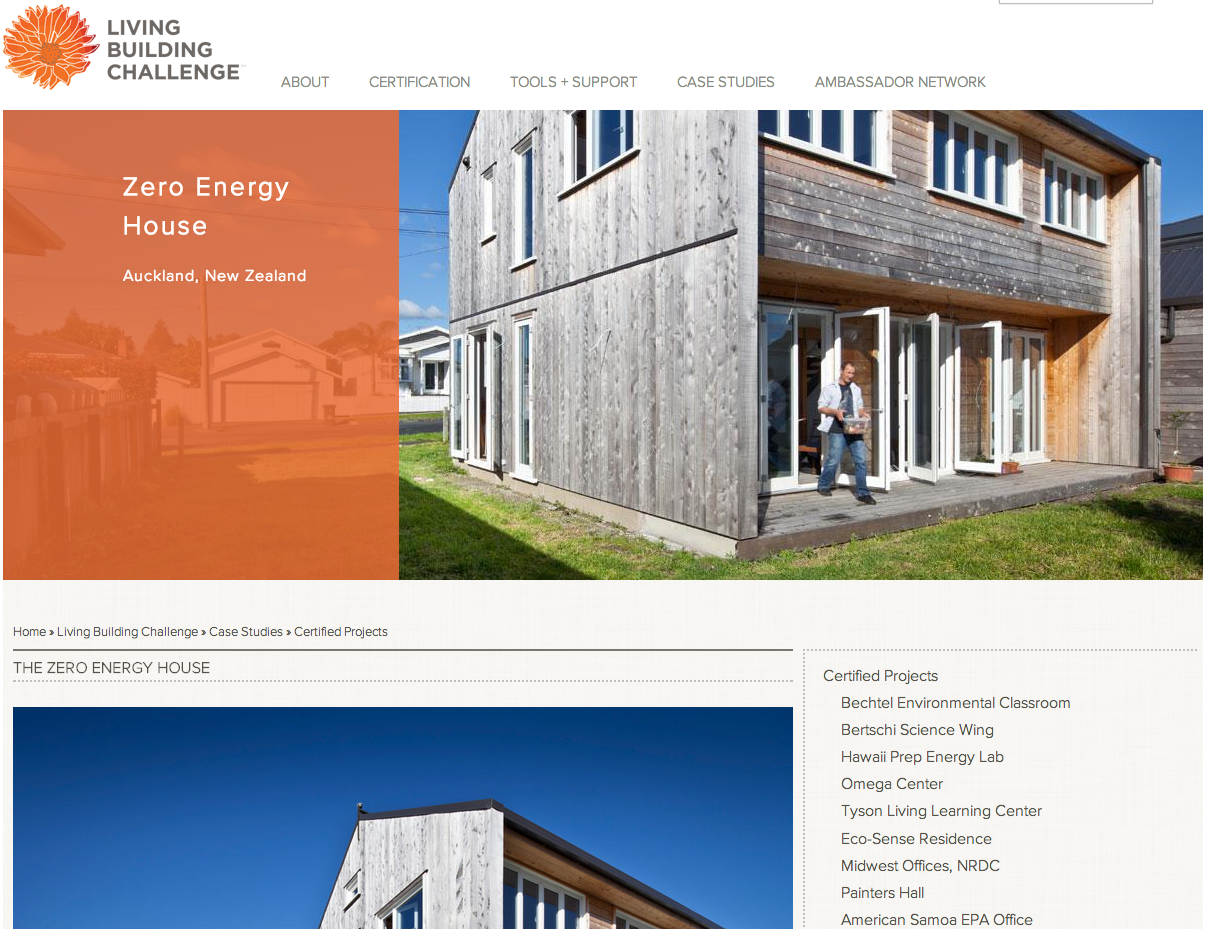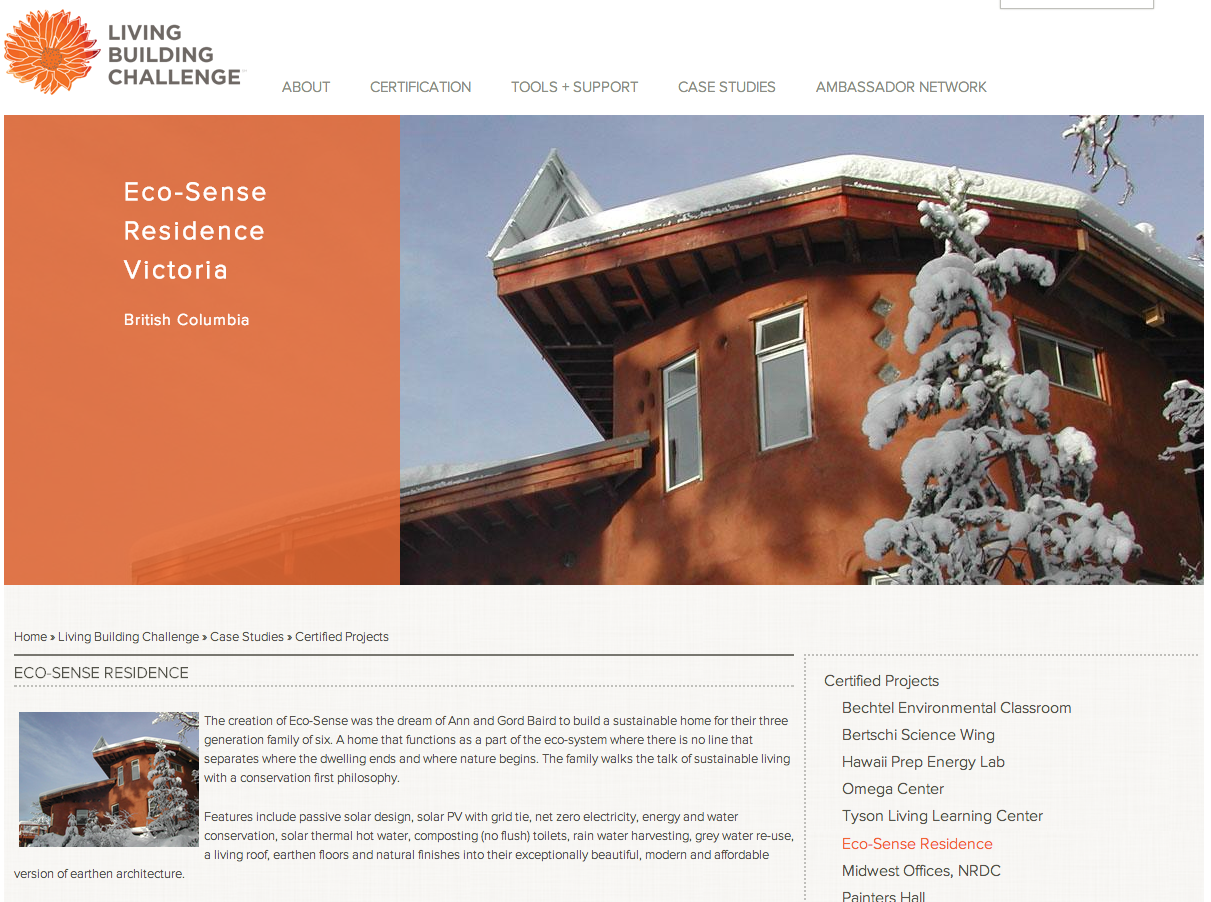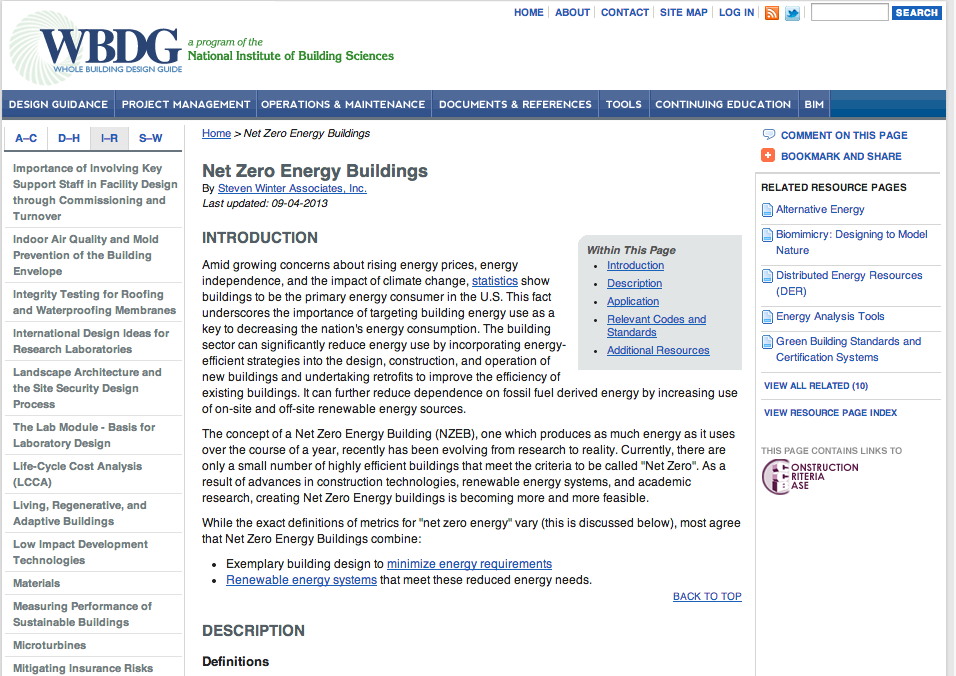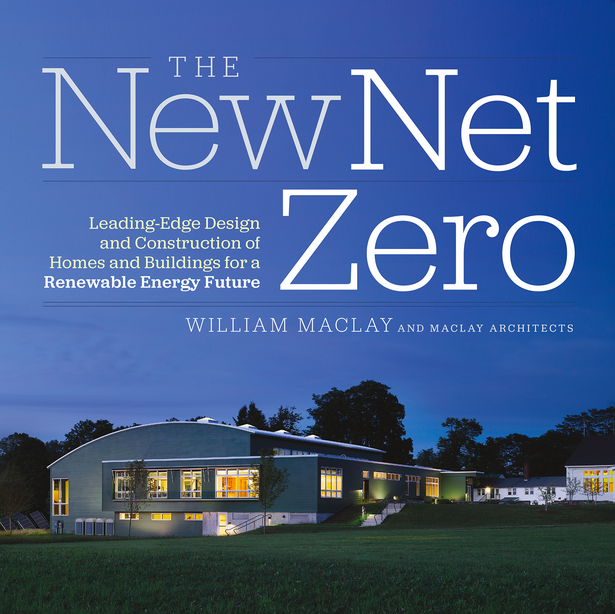Case Studies
New Buildings Institute Path to Zero Energy Webinars
http://newbuildings.org/webinars
The New Buildings Institute hosted a great series of webinars about getting to zero energy from experienced professionals working on the leading zero energy projects in the country.
US Department of Energy Solar Decathlon
http://www.solardecathlon.gov/past/2013/technical_resources.html
A bi-annual competition for colleges and universities to design, build and operate solar-powered houses that are cost-effective, energy-efficient, and attractive. This website has project briefs and construction documents for every solar decathlon entry since 2002.
VandeMusser Residence and Office
http://www.resnet.us/blog/wp-content/uploads/2013/03/Net-Zero-Home_VandeMusser-Design.pdf
A couple, Amy Musser and Matthew Vande, designed, built, and now live in their net zero energy home and office in the mountains of Asheville, North Carolina.
Thomas Residence
http://www.greenbuildingadvisor.com/homes/net-zero-energy-house-125-square-foot
An article on homeowners in Seattle who built an affordable net-zero energy house for $125/SF. For airtightness and insulation, they use structural insulated panels, triple-glazed windows, and an air-to-water heat pump. A 6.4-kW photovoltaic solar array produces 1429 kWh more energy than the house consumes.
Zero Energy Home
http://living-future.org/case-study/zeroenergyhouse
http://www.zeroenergyhouse.co.nz/
The Zero Energy Home was built in Auckland, New Zealand and uses building integrated photovoltaic panels (BIPV) as the roof shingles to produce more energy than the house consumes. The owners made a website with additional information and instructional videos.
zHome
http://living-future.org/case-study/zhome
zHome is a ten unit townhouse development that has achieved net-zero certification from the International Living Future Institute and meets a number of other high performance goals.
Eco-Sense Residence
http://living-future.org/case-study/ecosense
While the Eco-Sense Residence is not zero energy, it does address many of the other aspects of our competition, including the protection of health through material selection.
Charlotte Vermont House
http://www.wbdg.org/references/cs_ch.php
A home that sits on a 44 acre site centered around a pre-existing riding arena was renovated with minimal impact to the surrounding hillsides to provide maximum energy efficiency. The property is complete with full solar access and a few restored trails for community usage.
Ecological Development Foundation–Zero Energy Homes
http://www.zerohomes.org/zero-energy-home-design/
A non-profit educational site designed to help in all steps of constructing and buying zero net energy homes. Its focus is to radically reduce carbon emissions and energy bills by building zero energy, zero carbon, affordable housing.
Vivent | Garbett The Zero Home
http://www.thezerohome.com/en/about#two
http://contractormag.com/green/affordable-net-zero
The joining of two companies in Utah, one is the largest home automation service provider in the United States and the other is specialized in affordable green living spaces, combines green buildings with the latest home and energy management technology. Together they achieved the construction of the first net-zero climate 5 home that is replicable, affordable and scalable.
Nexus Energy Homes
http://www.nesea.org/renewable-energy/net-zero-energy-homes-gain-momentum-and-affordability/
An article by SolarReviews on the rise in construction of net-zero energy houses and the integration of affordable energy efficiency into standard building practices.
Transformations Zero Energy Homes
http://transformations-inc.com/press/PDF/Solar_Today_Nov-Dec-2011.pdf
Transformations, a company that builds and develops zero-energy communities and installs solar electric systems for homeowners, published the plan and process of a net-zero affordable farmhouse model that produced more electricity than it used and achieved a HERS index of 3.
TVA Near-Zero Energy Homes–Lenoir City
http://www.energyright.com/residential/zero_energy_homes.html
From 2002-2005 TVA developed a series of near-zero houses for Habitat for Humanity in Lenoir City, TN.
TVA Campbell Creek Energy Efficient Homes Project–Near zero-energy house
http://www.tva.gov/campbellcreekresearchhomes/
http://epriweb.azurewebsites.net/
As an extension of the near-zero energy homes for Habitat, TVA also developed the Campbell Creek Research Homes that compare typical construction, slightly modified construction, and near-zero energy construction and then tested the results.
References
Department of Energy Zero Energy Ready Homes
Whole Building Design Guide–Net Zero Energy Buildings
http://www.wbdg.org/resources/netzeroenergybuildings.php
An introduction to net zero energy buildings with great information and examples.
US Department of Energy National Renewable Energy Laboratory–Getting to Net Zero
http://www.nrel.gov/docs/fy09osti/46382.pdf
An overview of the U.S. Department of Energy's efforts toward realizing cost-effective net-zero energy buildings and defining the expectations of the net-zero projects.
David Johnson and Scott Gibson–Toward a Zero Energy Home
Net Zero Energy and Living Building Challenge Financial Study
http://newbuildings.org/net-zero-living-building-challenge-financial-study
This study was prepared by the International Living Future Institute, the New Buildings Institute, and Skanska for the District of Columbia Department of the Environment and explored the return on investment for Net Zero Energy and Living Building Challenge certified construction and found that a 30% return on investment was realized for a building achieving net-zero energy as compared to 5-12% for energy efficiency alone.
The New Net Zero Book
http://media.chelseagreen.com/the-new-net-zero/
This book from sustainable architect Bill Maclay reviews some of the latest budget-conscious zero energy design and construction techniques and includes details for designers and builders to incorporate.




















